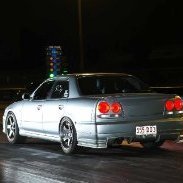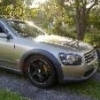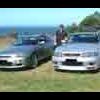Announcements
-
Similar Content
-
Latest Posts
-
By bigboss59400 · Posted
that is correct to be more precise, this sensor goes to a loom which contains only the flat blade single terminal (to connected to this sensor) and then the connector shown in my first post. This loom is tied up to one of engine hairness -
This is really sad news to hear and it has taken me a few days to come to grips with the loss of Neil. Neil was very straight forward and I have always respected his honesty and how he called it how it was. He was a very knowledgeable man and was always available to provide advice when you needed help to solve a problem because he would have encountered the same issue in the past and could explain how he solved it. Neil will be missed by many members of the Skyline family.
-
Dropped the car down to my mates shop on the 19th to get it on the dyno. Ran the motor in and dropped the running in oil and filter and filled it up with some engine oil. Monday arvo I went down and we got a tune in her. Had a fun time trying to get it to hook up on the rollers. We end up having to roll into the throttle, reaching full throttle at around 6k. Made 23psi on gate then tapered off to 20psi up the top and spat out a healthy 700rwhp. We had a slight voltage issue which was dropping ecu volts to around 11.8v so we called it quits and on Tuesday I went down and ran a couple of new power feeds to the ECU and DBW relays. Have yet to test it as we were trying to get things sent into the ECU from the TCU over CAN. We've now got oil temp, programme switch and gear position. Still working on gearbox speed, but have been told what to do so hopefully that will sort it. Once we've got speed working, we can start setting up the gear shift cuts and do some clutch adaptations in the TCU. Should have the majority of it setup this week and go over the tune to see how it is now with the new power wire. Was slack this time, didnt get any full runs as I was watching the TCU data on the laptop. Snapchat-322660241.mp4
-
Not until I googled it, now I remember lol. Seems like it's just to clean it up. But it doesn't stop the leak, I have a leak issue though? Thinking whether I need a new bottle, surely not lol.
-






Recommended Posts
Create an account or sign in to comment
You need to be a member in order to leave a comment
Create an account
Sign up for a new account in our community. It's easy!
Register a new accountSign in
Already have an account? Sign in here.
Sign In Now